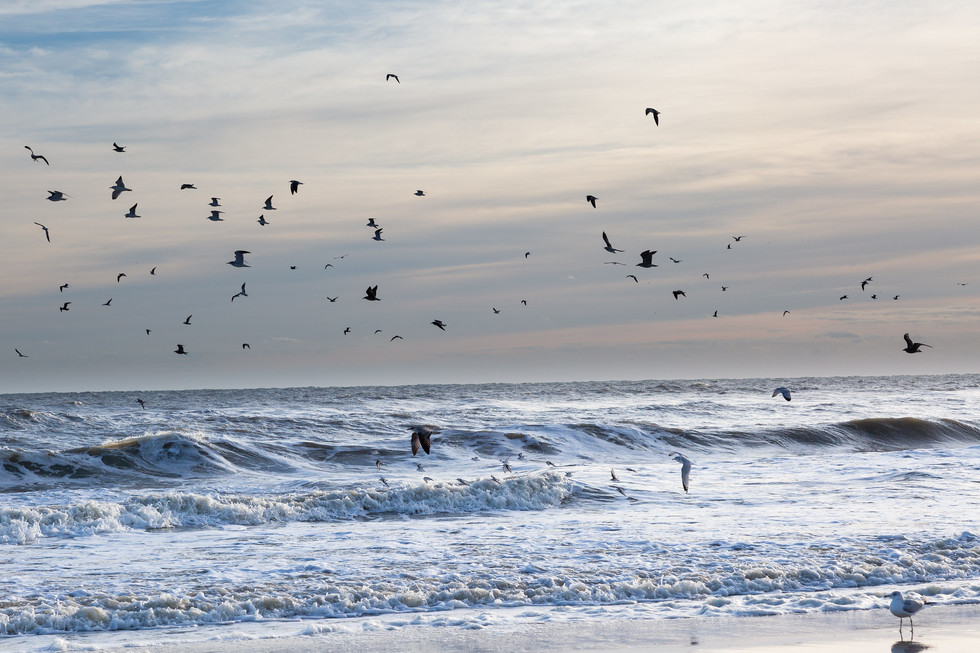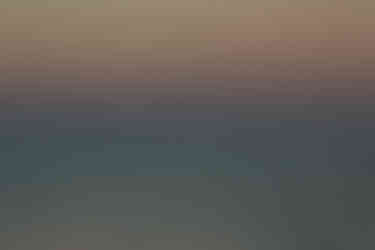There are some really exceptional wildlife photographers. I'm not one of them. I have friends who love to shoot birds and I enjoy looking at their images. I hate to admit it, but when I'm shooting my landscapes or seascapes, the birds are often a distraction and I either wait until they're out of the way or I look in a different direction.
During the week we were in Corolla, there was no moving away from the birds. They were everywhere. I am going to be publishing quite a few images from the sunrises on Corolla beach. You will notice fishing boats on the horizon. If you look closely, you will see swarms of birds hovering over their nets. When they're done with their meals, they come back to the beach to rest. They are all over the beach.
For my aesthetic, I would characterize the birds in my images as graphic elements as opposed to living organisms. I look for interesting patterns, reflections and contrast. If I was able to get down onto the ground and get back up, these images would be more interesting. Even a slight squat is painful for my knees (or what used to be knees).
I try to move around the beach slowly so as not to disturb the birds. If they don't like that a human is approaching, they'll just move away. If they feel threatened, they take off. And once one of them goes airborne, the alarm is sounded and they're all off to the races. I feel badly about it, because it feels like a lot of effort to avoid someone who isn't going to hurt them. But it does make for some interesting images. Their usual behavior is to take off, fly in a circle and then land in about the same place on the beach. The graphic quality of these images is even more apparent than those taken while they are resting on the beach.
And then there are some opportunities that arise just from the placement of the bird in an interesting background, which, of course, is an abstract.


What makes this image for me is the silhouette of the solitary bird in flight and the colors in the sky and those reflected in the beach. I guess this is why it is referred to as the golden hour.

We were fortunate to have a full moon during our vacation week. I don't have the best lens for taking moon photographs (300mm). It just doesn't do justice to the beauty of the moon. The last of this series is larger only because I cropped the image.
There is something really beautiful about watching the moon break the horizon and rise up from the ocean. The moon appears larger when it is close to the horizon and particularly when it comes up near to foreground elements, such as trees or buildings. As the moon rises in the sky, it appears smaller. This is a perspective thing. The foreground in these images is the expanse of ocean; not all that interesting.
Shooting the moon takes some practice. To see the features on the moon when it is full, you have to shoot at a relatively fast exposure. It is amazing how much light is reflected from the moon's surface. If the sun is down and it is dark, if you properly expose for the moon, the foreground will be too dark to be seen. You can see the foreground in the images below (the ocean), because the sun has just set and it is still fairly light outside. Those are the best conditions for being able to see the foreground and capture the features on the moon; when the moon rises just as the sun sets. Fortunately, this is how it works when there is a full moon.
































Sandy, the first shot of the moonrise at sunset is exquisite as it looks as if the moon is on fire and burning erratically.
As an avid 'Bird Nerd' I love to watch the colours and behaviours of birds from my windows and balcony being so close to a park and the water.
The shot of the single bird on the beach is wonderful---how the heck do those skinny bird legs support that chunky body?
I am sorry your knees are not giving you anything but pain these days